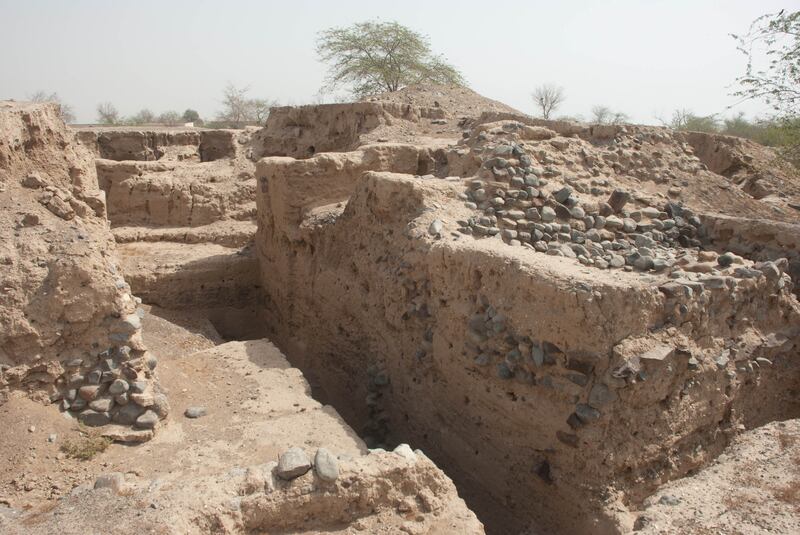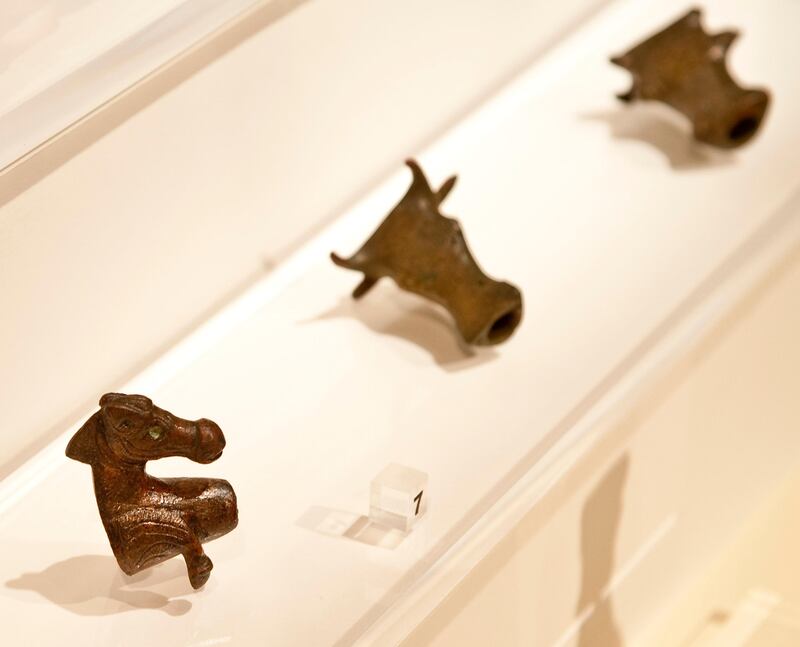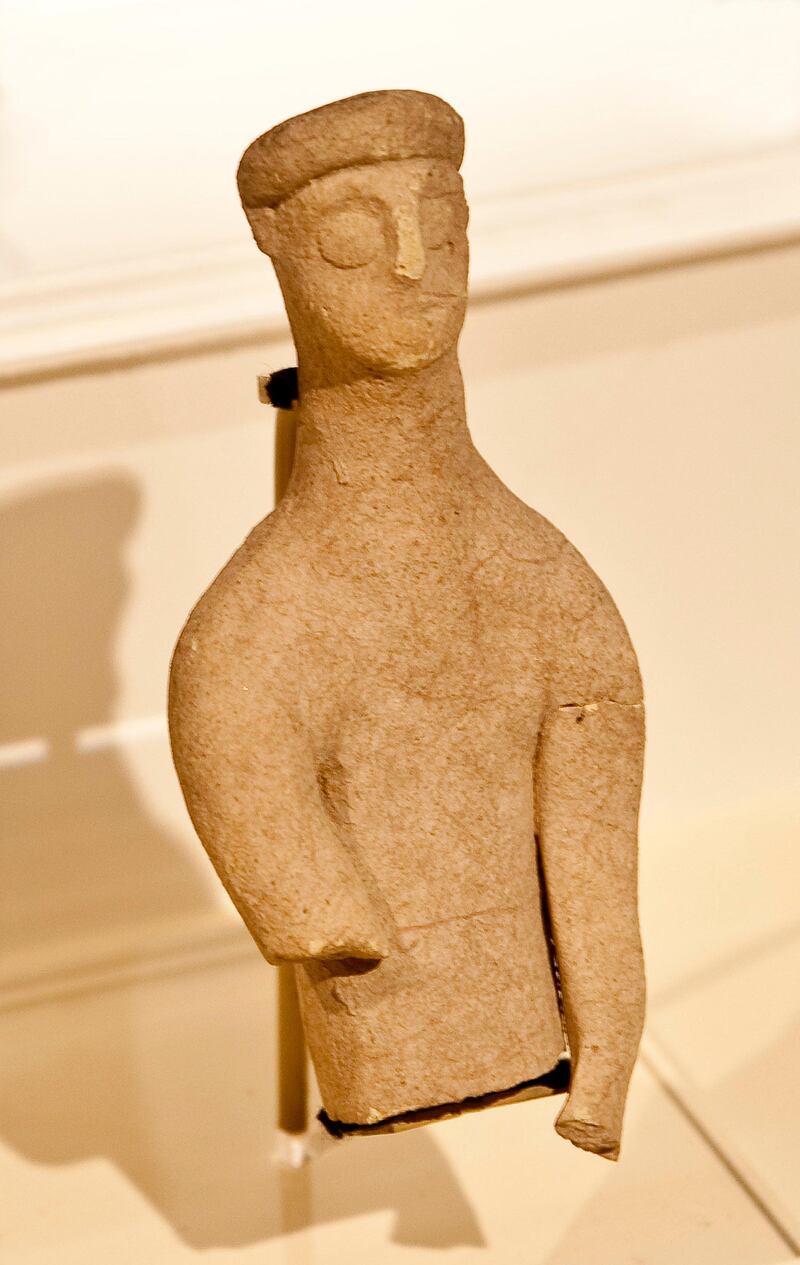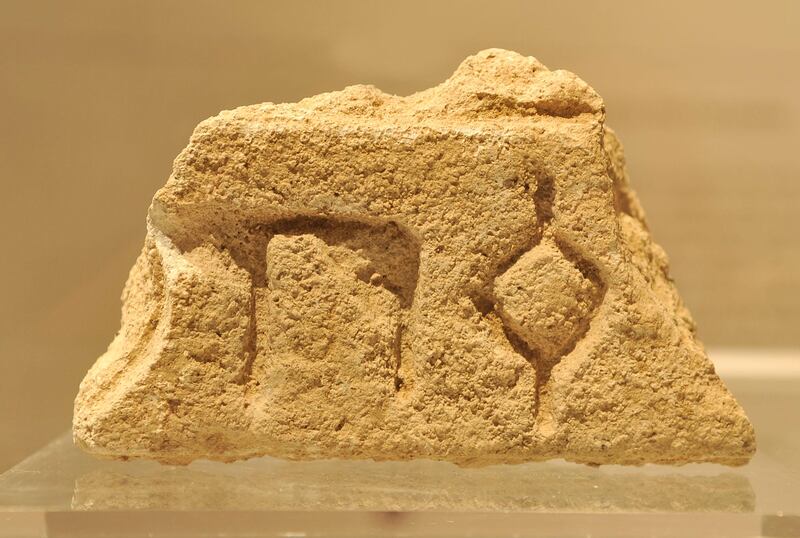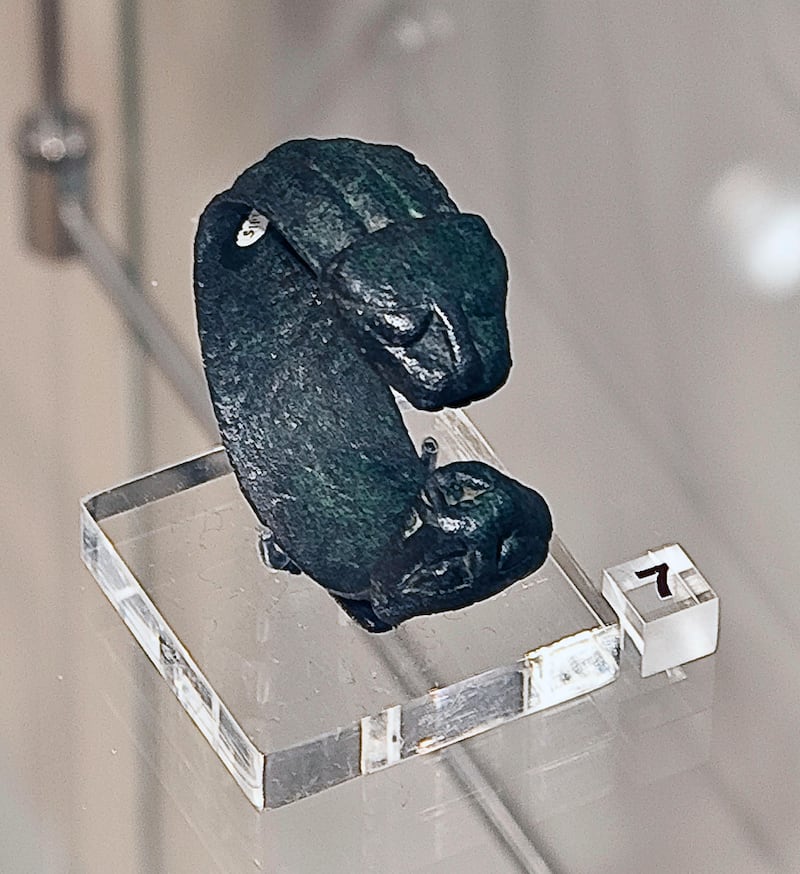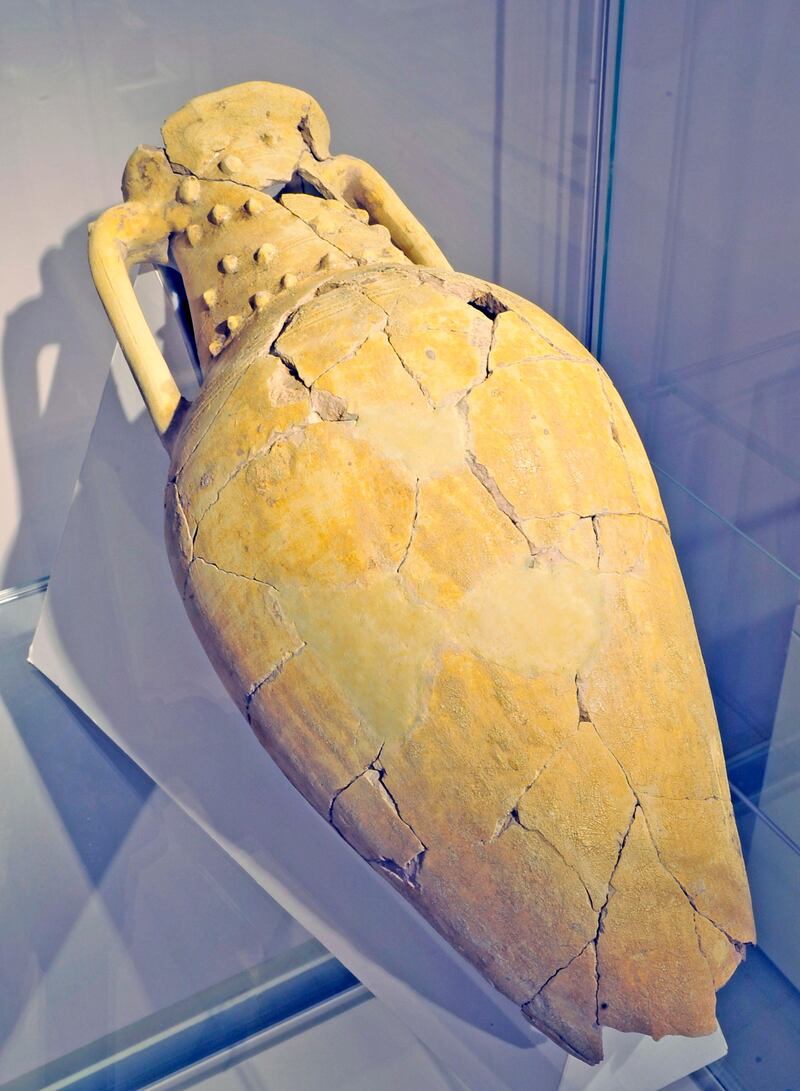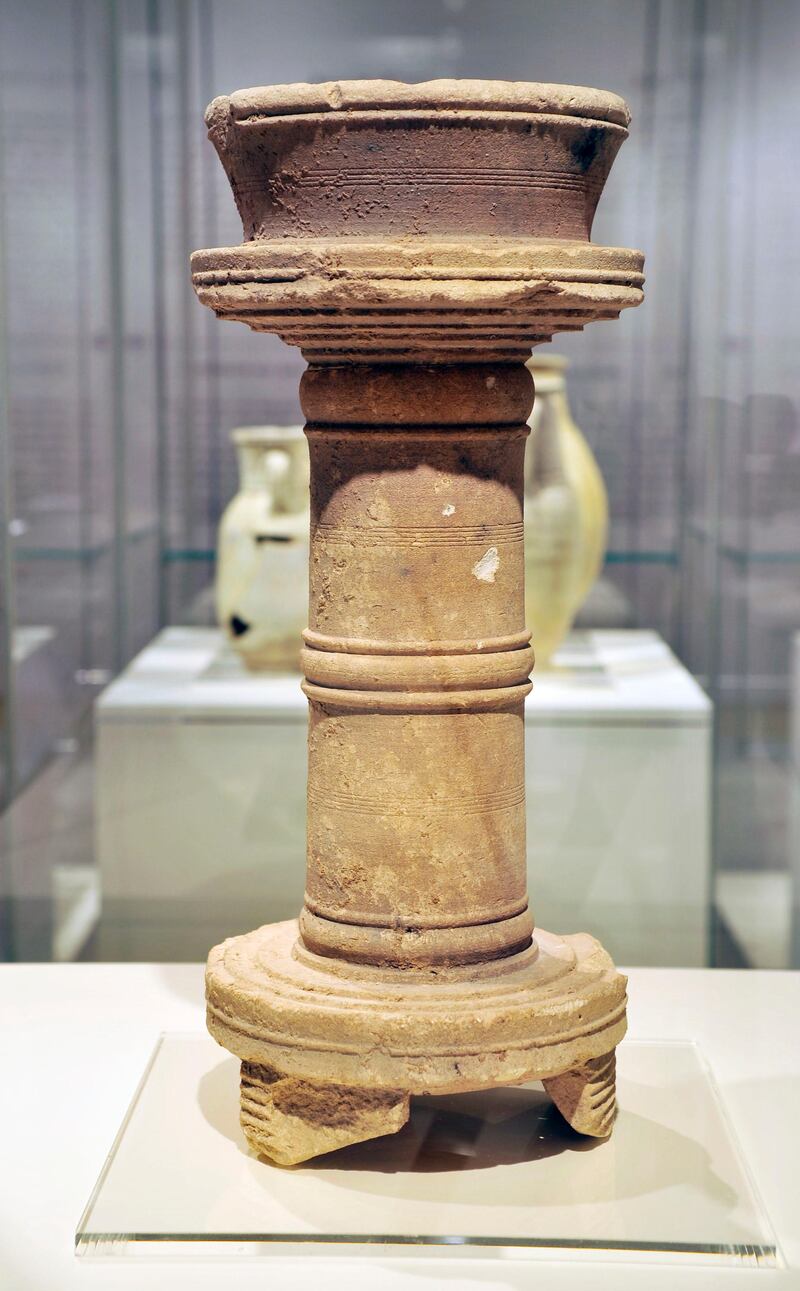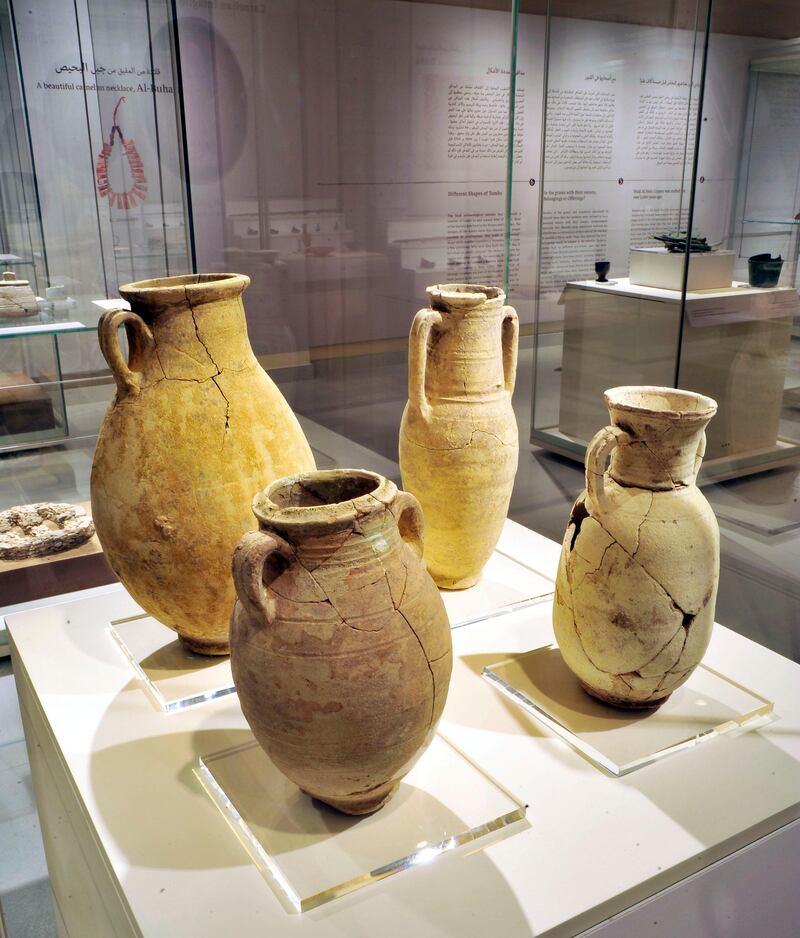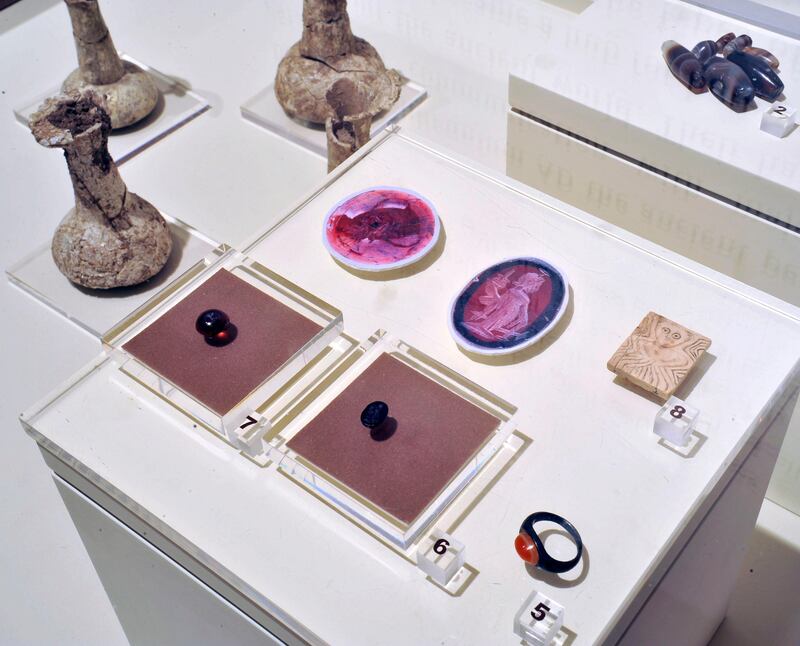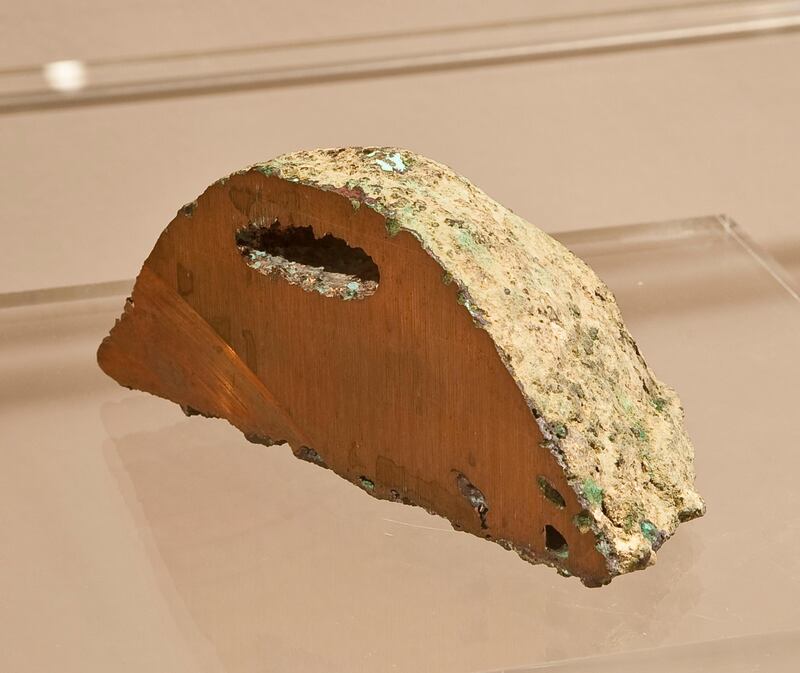Turn the clock back more than 4,000 years and the area that is now the UAE was trading with some of the world’s great early civilisations.
This has been demonstrated to fascinating effect in a study which shows that people living at a site called Kalba 4 in present-day Sharjah on the UAE’s east coast exchanged copper for Mesopotamian ceramic vessels that may have contained fragrant oils or other valuable liquids.
People in south-east Arabia also received woollen clothing and other goods from Mesopotamia, the area in today’s Iraq where one of the world’s first civilisations developed.
Dr Daniel Eddisford, a British archaeologist, has painstakingly analysed thousands of pieces of pottery to build up a picture of the links the people at Kalba 4 had with other civilisations.
His research focuses on the Early Bronze Age civilisation in the UAE and Oman: the Hafit period, from about 3200 to 2800 BCE, which is named after distinctive tombs first excavated at Jebel Hafit near Al Ain; and the Umm an-Nar period, which lasted from about 2800 to 2000 BCE and is named after the island off Abu Dhabi where evidence for it was first discovered.
These societies existed when people were becoming more rooted to particular areas.
“There’s a shift from being much more mobile and herding sheep and goats to settling down and using agriculture,” Dr Eddisford said.
The pieces or sherds of pottery from Kalba 4 that Dr Eddisford used for his new study, published in the journal Arabian Archaeology and Epigraphy, were analysed during several trips — each between a month and six weeks — he made to the UAE.
Excavation site reveals link with Mesopotamia and Indus Valley
Kept in storage in Sharjah, the material had been collected by another archaeologist, Carl Philips, during excavations of the Kalba 4 site three decades ago, but was never fully analysed.
There were about 12,000 sherds of pottery in total, about 1,000 of which were from the Early Bronze Age and, of these, just under 30 per cent were imported.
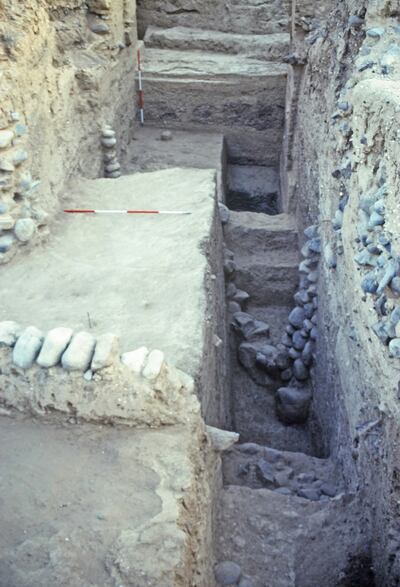
There was a wide range of imported ceramics at the site, including jars between about 40 centimetres and 60cm tall, with ribbed rims that appear to have been shaped to allow a cloth or leather cover to be placed over the jar and tied in place.
It had been thought that during the Early Bronze Age links with Mesopotamia dwindled and were instead replaced by trade with another great early civilisation, that of the Indus Valley, located on what is now the border between India and Pakistan.
However, Dr Eddisford’s analysis detected the continued presence of Mesopotamian pottery — made from distinctive clays deposited by the Euphrates and Tigris rivers and characterised by a yellow-brown colour — in south-east Arabia.
This indicates that, at least at some coastal sites such as Kalba 4, trading links with Mesopotamia persisted longer than previously thought. This new archaeological evidence supports written evidence from Mesopotamia of trading expeditions along the Gulf at this time.
Dr Eddisford, who is an honorary fellow at Durham University in the UK and runs the company Heritage International, which undertakes archaeological work in the region, said analysing these societies in the UAE was interesting because they had not been studied as much as some others.
“We’re very familiar with Mesopotamian archaeology, Egyptian archaeology, people have been visiting those regions, western researchers, for centuries, whereas the archaeology of the Emirates and GCC countries, it’s not as well known,” he said.
“It’s really only over the last maybe 40, 50 years that work has been going on, so there’s a lot of new things to find out.”
In the period under analysis, the first states were forming in Mesopotamia, where the world’s first empire developed during the Akkadian period from about 2350 BCE.
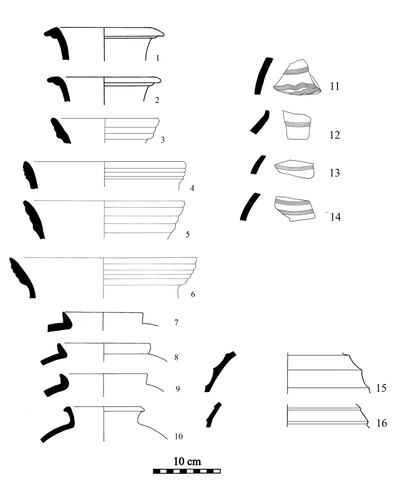
“In the [areas] surrounding [Mesopotamia] you have non-state societies. What’s going on in those societies, it’s not as well known. Often it doesn’t have the same monumental architecture or sculptures,” Dr Eddisford said.
“Quite often they don’t use writing as extensively if at all, so we may lack written records, so archaeology is really important to understand what’s going on in those areas, and the relationship between the states and these surrounding non-state societies.”
The copper, mined in the Hajar mountains and exchanged with Mesopotamia, was used to make bronze, which was turned into weaponry, jewellery, items for display and more everyday objects.
Its use in farming is likely to have increased throughout the Early Bronze Age, which would have caused the demand for copper in Mesopotamia to grow.
Evidence of ceramic, wool and copper trade
As well as receiving ceramic jars and their contents in return for the copper, societies in south-east Arabia are likely to have accepted woollen clothing, all brought in by large boats sailing down the Gulf from Mesopotamia.
Unlike the pottery vessels, which last for thousands of years, the woollen clothing degraded over time and there are no direct traces remaining.
“Obviously they [the woollen garments] do not survive, we just don’t see them,” Dr Eddisford said.
“We only know them from the written records from Mesopotamia. Or possibly, occasionally in the graves, you find metal pins that were probably fastening these woollen garments.”
It is likely that boats originating from Mesopotamia and boats that originated from what is now the UAE were involved in this exchange of goods.
Like the woollen garments, these boats do not survive, but occasionally the bitumen that was used to cover their hulls does, with impressions of the wooden planks and reeds that were used to construct them.
Other evidence that the inhabitants of south-east Arabia were skilled sailors includes the fact that they caught a range of fish and larger sea creatures such as turtles and dugongs, as indicated by bones found at archaeological sites.
Dr Eddisford, whose links to UAE archaeology go back two decades, is still involved with archaeological excavations in the country and is currently working with the Department of Culture and Tourism — Abu Dhabi on sites in the emirate.
He said he was “very lucky” to be able to do work that offered a glimpse into how people lived thousands of years ago.
“I’m very privileged to do the job I do, I enjoy it very much,” he said.
“As an archaeologist, I’m often asked, ‘Have you found any gold, have you found any treasure?’ Very occasionally we might do that.
“What’s really amazing to me is to find these things that inform on what life was like, and to think about what it was like to set off on a journey to sail up to Mesopotamia. Or to be there when boats from Mesopotamia sailed down and you saw them on the horizon.”
